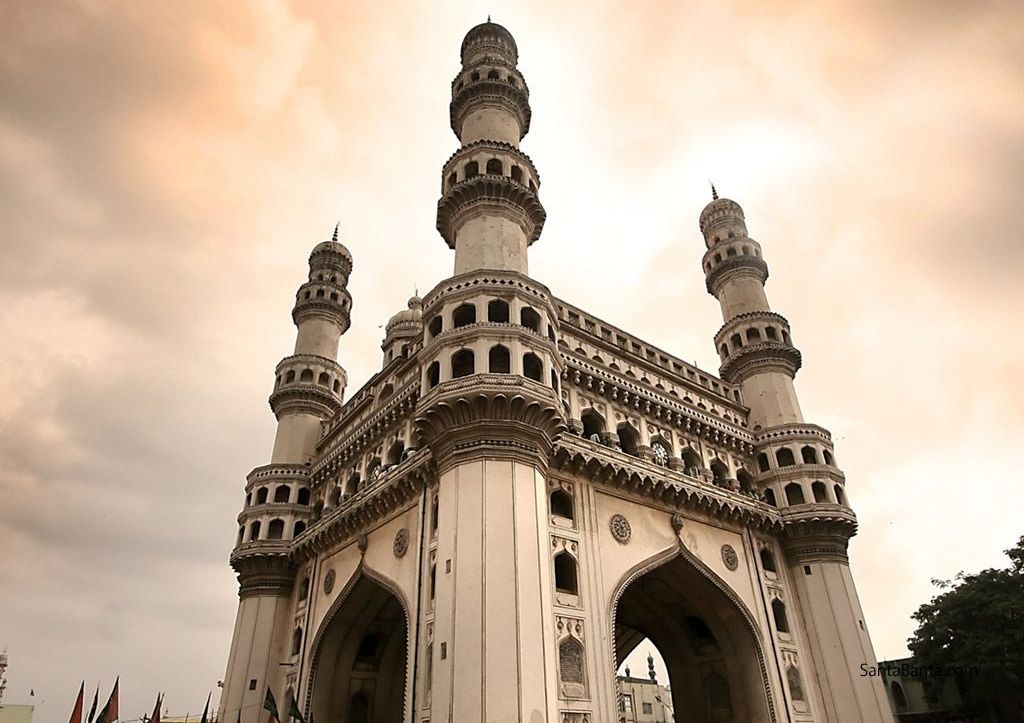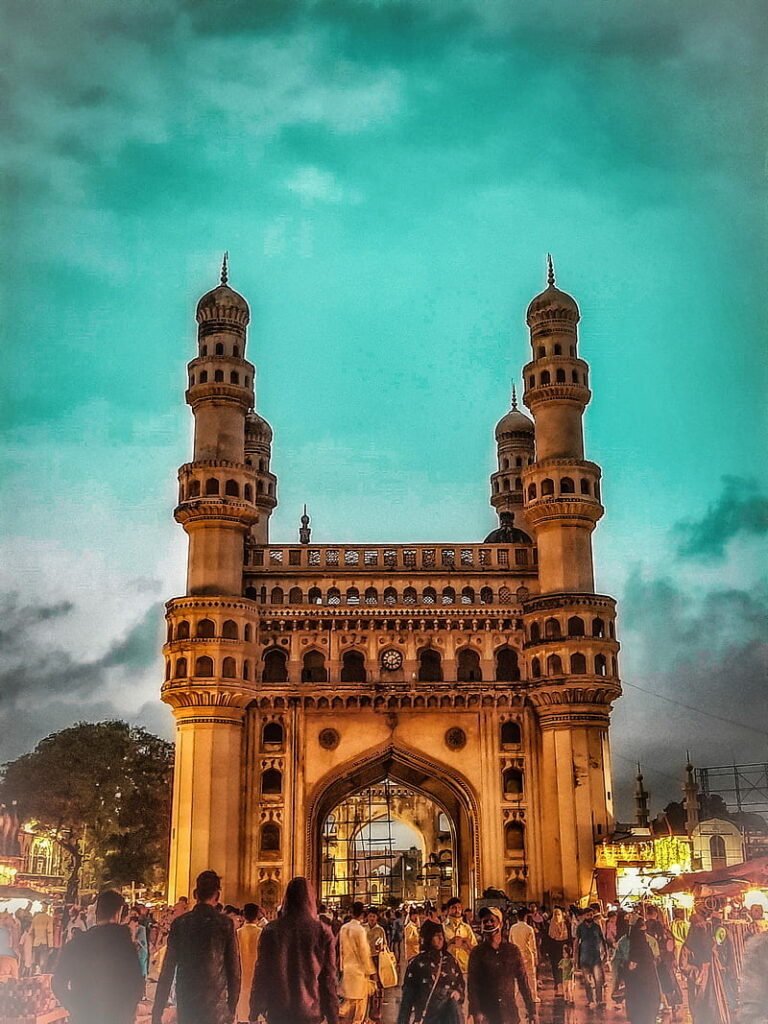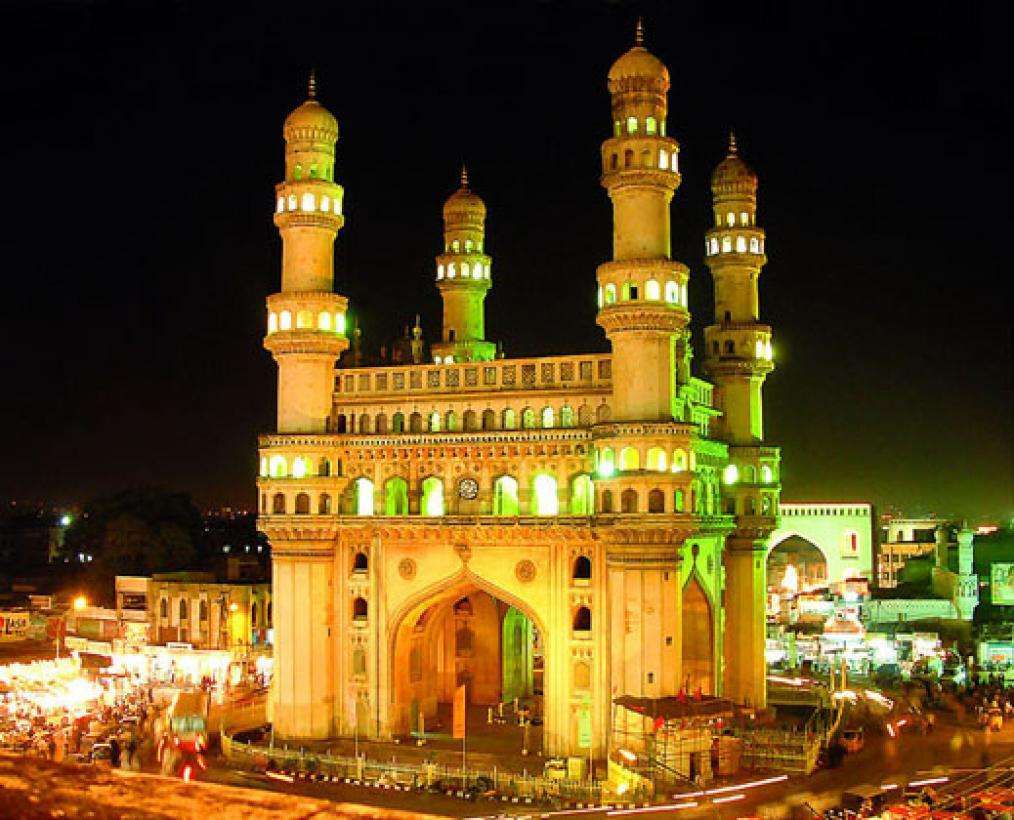The Archaeological Survey of India (ASI), the current caretaker of the structure, mentions in its records, “There are various theories regarding the purpose for which Charminar was constructed. However, it is widely accepted that Charminar was built at the centre of the city, to commemorate the eradication of Cholera”, a deadly disease that was widespread at that time. Muhammad Quli Qutb Shah had prayed for the end of the plague that was ravaging his city and vowed to build a Mosque at the very place where he prayed. According to Jean de Thevenot, a French traveller of the 17th century whose narration was complemented with the available Persian texts, the Charminar was constructed in the year 1591 CE, to commemorate the beginning of the second Islamic millennium year (1000 AH). The event was celebrated far and wide in the Islamic world, thus Qutb Shah founded the city of Hyderabad to celebrate the event and commemorate it with the construction of this building. Due to its architecture, it is also called Arc de Triomphe of the east.

The Charminar was constructed at the intersection of the historical trade route that connects the markets of Golkonda with the port city of Machilipatnam. The Old City of Hyderabad was designed with Charminar as its centrepiece. The city was spread around the Charminar in four different quadrants and chambers, segregated according to the established settlements. Towards the north of Charminar is the Char Kaman, or four gateways, constructed in the cardinal direction. Additional eminent architects from Persia were also invited to develop the city plan. The structure itself was intended to serve as a Mosque and Madrasa. It is of Indo-Islamic architecture style, incorporating Persian architectural elements.
Historian Masud Hussain Khan says that the construction of Charminar was completed in the year 1592 and that it is the city of Hyderabad which was actually founded in the year 1591.
Structure
The Charminar masjid is a square structure with each side 20 meters (approximately 66 feet) long, with four grand arches each facing a fundamental point that open into four streets. At each corner stands an exquisitely shaped minaret, 56 meters (approximately 184 feet) high, with a double balcony. Each minaret is crowned by a bulbous dome with dainty petal-like designs at the base. Unlike the minarets of the Taj Mahal, Charminar’s four fluted minarets are built into the main structure. There are 149 winding steps to reach the upper floor. The structure is also known for its profusion of stucco decorations and the arrangement of its balustrades and balconies.

The structure is made of granite, limestone, mortar and pulverized marble and it weighs approximately 14000 tones. Initially, the monument with its four arches was so proportionately planned that when the fort was opened one could catch a glimpse of the bustling Hyderabad city, as these Charminar arches were facing the most active royal ancestral streets.
There is also a legend of an underground tunnel connecting the Golconda fort to Charminar, possibly intended as an escape route for the Qutb Shahi rulers in case of a siege, though the location of the tunnel is unknown.
A mosque is located at the western end of the open roof; the remaining part of the roof served as a court during the Qutb Shahi times. The actual mosque occupies the top floor of the four-storey structure. A vault that appears from inside like a dome supports two galleries within the Charminar, one over another, and above those a terrace that serves as a roof, bordered with a stone balcony. The main gallery has 45 covered prayer spaces with a large open space in front to accommodate more people for Friday prayers.
The clock on the four cardinal directions was added in 1889. There is a Vazu (water cistern) in the middle, with a small fountain for ablution before offering prayer in the Charminar mosque.
Tags: Charminar, Charminar at Hyderabad, Charminar Hyderabad, Charminar Hyderabad history, Charminar Hyderabad Telangana, Hyderabad Charminar gate.

